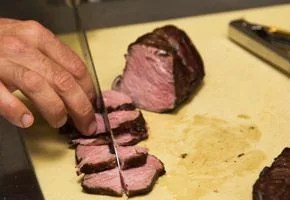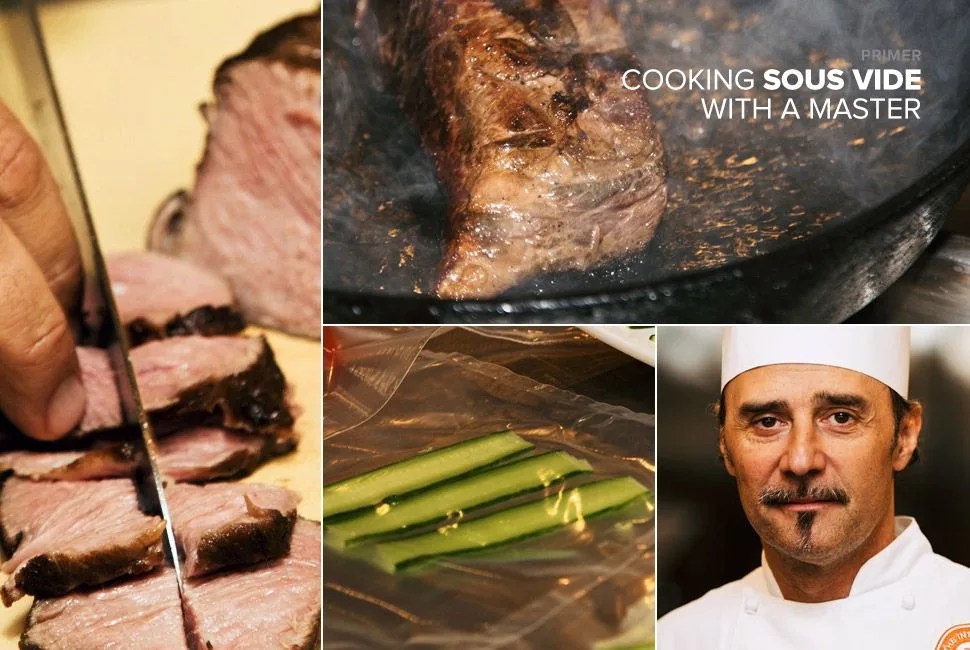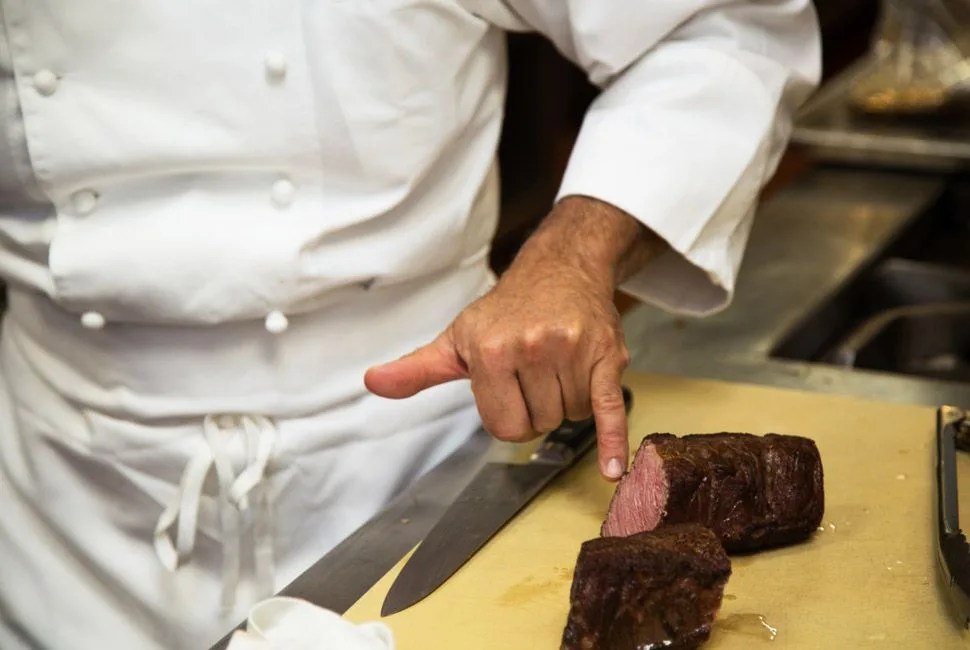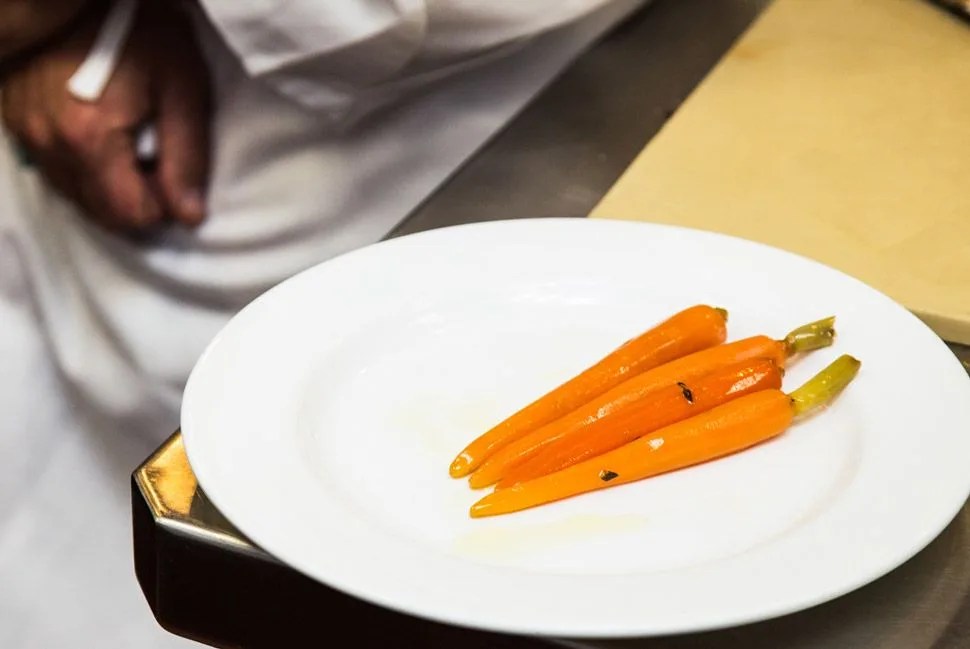8 photos
The enormous teaching kitchen at the International Culinary Center (formerly the French Culinary Institute) is empty but for two immersion circulators perched on two polycarbonate open vats, one simmering, carrots vacuum packed with olive oil and thyme, the other reading 57 degrees C with a massive short rib suspended inside. It’s 10 a.m., which is starting to seem like a good hour for beef. Chef Hervé Malivert, Director of Food Technology and Culinary Coordinator, lays out slices of cucumber and fennel so perfect they look more like still life art than food. A rectangle of watermelon is wrapped so tightly it looks tortured. But our focus today is on the industrial-looking machine where those cukes and fennel slices are headed: a sous vide vacuum that creates a pressure-free, and then highly pressurized, environment. This is the machine that makes cooking sous vide possible, and we’re here to get a crash course in how it all works.
MORE EATING AND DRINKING 25 Best Restaurants in America | In Defense of the Everyman Beer | Best Mail Order Meat Companies
We’ve come to the ICC in New York specifically to meet with Malivert, a native of the Rhône region of France and the man who oversees anything having to do with centrifuges and liquid nitrogen. He’s got a good accent, the kind that really only the French are capable of: they sound more intelligent speaking your own language than you do. In any case, his knowledge of food and cooking is apparent. He’s both professor and craftsman, dressed in a crisp white uniform and tall chef’s toque, presenting eloquently about sous vide cooking while simultaneously demonstrating.
GRILLED BONELESS SHORT RIBS

In this recipe, Malivert chose an unusual cut to grill. In conventional cooking short ribs are usually braised, because the connective tissue needs time to break down. Here, this is accomplished by sous vide, low temperature cooking.








